The lights they turned off and from the darkness emerged a few letters fiery, strong, that seemed to float in the air. 'Three weeks in a helicopter'. A filmand sensitive, supercantado, spoken synthetically, color and stereoscopic, with accompanying synchronized of a body of perfumes.
[caption id="" align="aligncenter" width="756"]
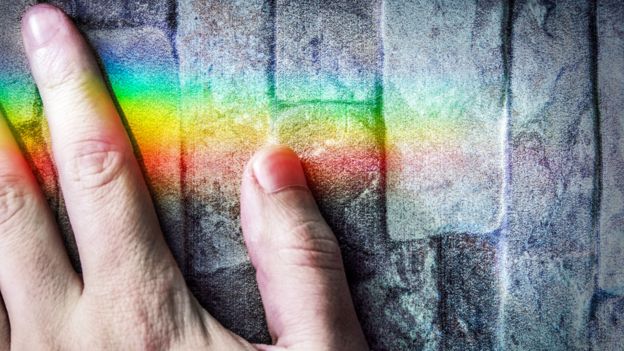 Touch what you should not be able to feel.[/caption]
Touch what you should not be able to feel.[/caption]— Grab those knobs metal of the arms of your seat —whispered Lenina—. Otherwise you will not feel the tactile effects. The savage obeyed their instructions.
Oh that feeling in their own lips! It led a hand-to-mouth; tickling stopped; again put the left hand on the knob metal, and turned to feel them. Meanwhile, the organ of perfumes, was exuding sheer musk".
When Aldous Huxley described the sensitive films in his satire "A happy world" of the 30's, imagined a world in which the sense of touch would be so exploited by the technology of the future as the eye and ear.
It has been slow in coming.
But it is coming.
[caption id="" align="aligncenter" width="773"]
 The sense of touch has not played a stellar role in technology ... yet.[/caption]
The sense of touch has not played a stellar role in technology ... yet.[/caption]Despite the fact that the sense of touch has not had a starring role as a means of interacting with machines, laboratories all over the world are eager to close the gap, and the first commercial applications are coming to the market.
Up until now we have interacted with a virtual environment using a plurality of portable devices. In the near future -to ensure the know-, there will be no need to charge laptops or mobile phones.
The implementation of the technology haptic -they say - will take us to a new era, in which the virtual world will be with us even though we don't see and we can feel it.
[anuncio_b30 id=1]
What Háptiqué?
The word haptic, from the Greek ἅπτικός, means pertaining to the sense of touch and comes from the Greek verb ἅπτεσθαι (haptesthai), which means contact or touch.
"Haptics is to the sense of touch what optics is to the sense of sight, "said Will Provancher, an associate professor of mechanical engineering at the University of Utah, USA.
If you've playing a video game, you can have using technology haptic on your joystick. If your cell phone vibrates in your pocket, it is also technology haptic.
But now imagine that you are in the sofa of your home, most comfortable, watching a program very interesting in the television.
[caption id="" align="aligncenter" width="724"]
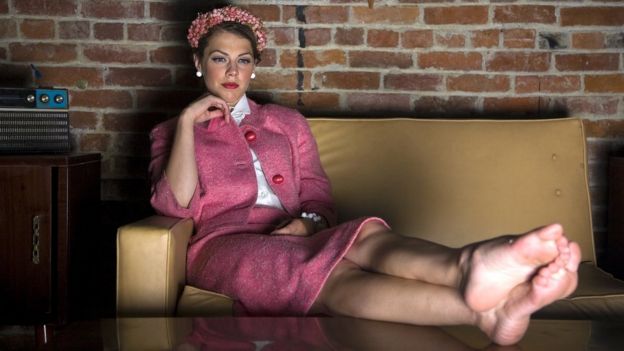 Captivated by a story.[/caption]
Captivated by a story.[/caption]At the end, you want to change the channel, but where you left the remote control?
Suddenly you remember that you don't need it: you are a lucky owner of a device with technology haptic.
As well as you are, without having any device in any part of your body, pick up the hand and, although you do not see anything floating in the air, feel the controls and push the button.
[anuncio_b30 id=1]
Impossible?
In Bristol, England, the company Ultrahaptics uses ultrasound to produce "focal points" -sound waves concentrated, suspended in the air - which essentially created a floating button and invisible that responds to the tactile feedback.
The user can "feel" those points and you can even feel differences between the points.
And touching something that does not exist is a mind-boggling experience.
Perhaps because of the technology we are already accustomed to listening to what we do not see and to see the impossible.
Or perhaps because the sense of touch conveys much more information to our brain that a single sense can provide.
[caption id="" align="aligncenter" width="736"]
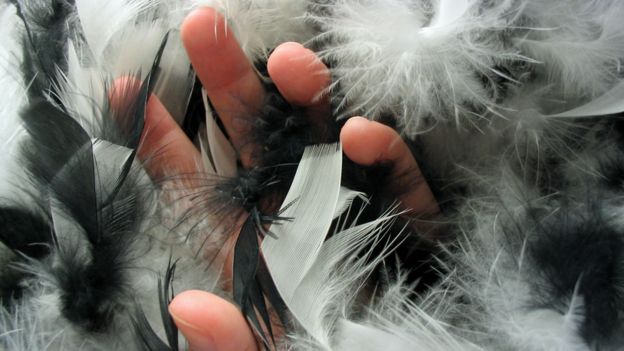 Soft, hot, light ...[/caption]
Soft, hot, light ...[/caption]The touch transmits temperature, pressure and texture. The touch is dramatic. The touch connects us.
The touch helps to immerse the user in the world you are creating for him.
[anuncio_b30 id=1]
But, how do you feel what is not there?
"Haptic refers to the sensory aspect that comes from the spinal cord. Includes the sense of touch and the interoception", replied one of the pioneers in virtual reality, the philosopher of computer science Jaron Lanier, when he spoke with the BBC.
"It is a sensory system vast processed by a wide area of the brain," he added.
"From my point of view is an ocean giant of intelligence that we have used it only as a way of moving, but that can be extraordinary".
"If you look at the pianists to improvise, you can sometimes solve math problems by choosing musical notes that could not be solved so easily otherwise", he noted.
"It's that kind of abstract thinking that we would like to better explore. The problem is that we know less about the feelings haptic than on the other senses, and is more difficult to design experiments to study them".
[caption id="" align="aligncenter" width="798"]
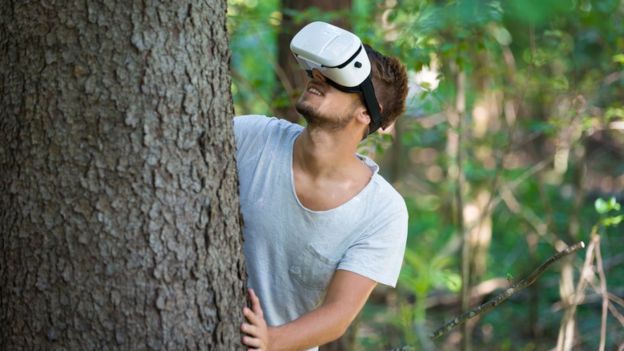 Different realities?[/caption]
Different realities?[/caption]What we would be creating a reality that mimics our own, or one that is just as tangible but reconociblemente different?
"The two things are equally interesting but in different ways", he replied.
"When you try to replicate reality so interesting is precisely that you find out that it is impossible".
"One might think that if we knew all that we know about the way in which we perceive reality through our senses and what replicáramos with technology, the virtual world could be as real as... real," he explained.
"However, the way in which we perceive the world is not limited only to the senses".
[caption id="" align="aligncenter" width="718"]
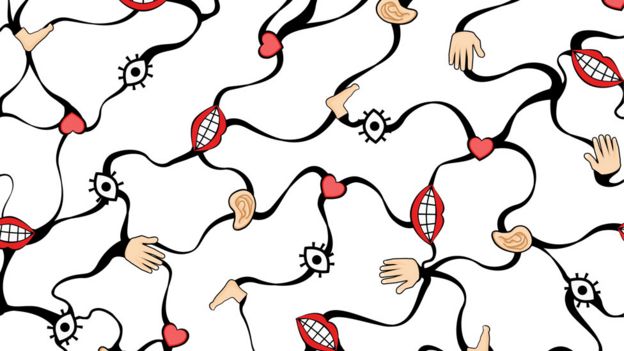 Not only with the senses do we perceive reality.[/caption]
Not only with the senses do we perceive reality.[/caption]"The brain is a creature of smooth plastic and they grow and learn, that's why I think that as we get more and better experiences of virtual reality, or illusions, haptic, we will learn to perceive the realities with increasing precision".
"If we brought them to the future, with a time machine, the technology we use, we will deceive".
"But the people who will be using that technology as it gets developed will not deceive you because they will have learned to see the world better than we what we see today."
And what would you like to be able to do to Lanier, with the technology of haptic that we are not yet able to do?
"Oh so many things! One of them would be able to connect with another person and that we can see better".
[anuncio_b30 id=1]
On the horizon
More than just look good, as she longs for Lanier, there are researchers working on haptic and affective.
[caption id="" align="aligncenter" width="696"]
 How about feeling the person you're talking to?[/caption]
How about feeling the person you're talking to?[/caption]The idea is that the online interactions rely heavily on vision and hearing, but until now no physical contact, which is very important emotionally.
Is still in diapers, but, for example, in the Simon Fraser University have developed a glove that helps to transmit the touch of a hand. If you put the Flex-N-Feel , and turn or move the fingers of the hand, a signal travels over wifi to the sensors in the other glove, that vibrates to recreate the movement.
So you could pet or to take the hand of someone even if it is on the other side of the world.
[anuncio_b30 id=1]
To live
In the field of medicine, technology haptic promises a future that the majority would like it to become reality as soon as possible.
[caption id="" align="aligncenter" width="750"]
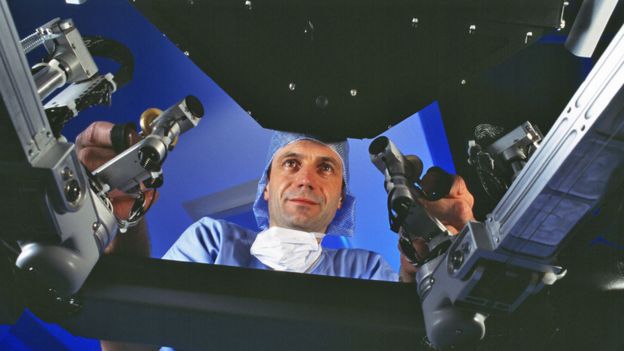 Hundreds of thousands of surgeries are already done with robots.[/caption]
Hundreds of thousands of surgeries are already done with robots.[/caption]Medical professionals already used during training exercises to practice surgical techniques, as well as during the surgery itself. However, until now, robotics has not been able to transmit tactile feedback to the surgeon.
Hundreds of thousands of robotic surgeries minimally invasive procedures are performed annually, but the surgeons operate without the benefit of the sense of touch.
The ideal would be that, for example, a surgeon may receive feedback haptic from the heart of a person and solve the problem without opening the chest cavity to use their hands.
And we are working on that.
SOURCE > BBC


No comments:
Post a Comment